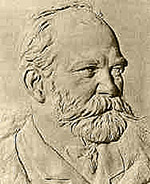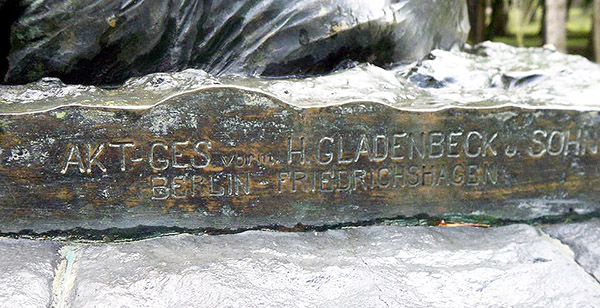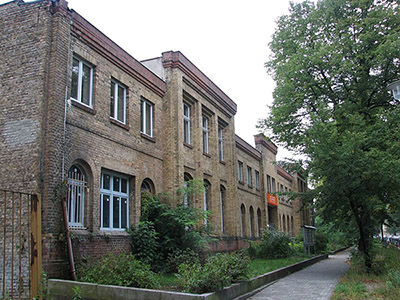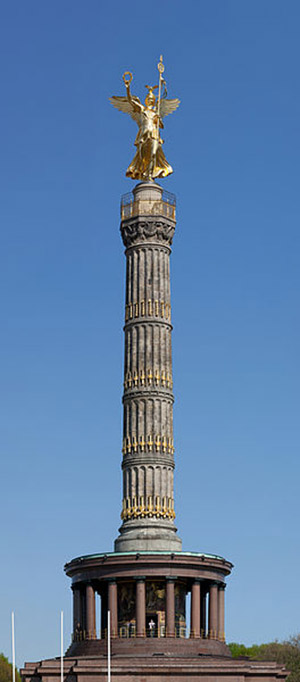Gladenbeck & Son Foundry
Several cultural objects are associated with the Berlin foundry Gladenbeck & Sohn in East Prussia: sculptures cast at this plant and then erected as monuments in various parts of East Prussia, from the Romincka Forest in the east.
Founder of the foundry, Carl Gustav Hermann Gladenbeck, was born in Berlin in 1827 into a family of doctors. Gladenbeck was connected with his hometown his entire life. He studied and worked there, died there and was buried in the Protestant cemetery "Christophorus" in Friedrichshagen in 1918.
After the death of his father, while still a teenager, Gladenbeck was forced to go to work. Having started work in 1841 as an apprentice at one of the most modern foundry and machine-building companies of that time, Franz Egels, Gladenbeck began to attend the foundry school founded by the famous artist-founder Christoph Heinrich Fischer. Later, he improved his skills under the guidance of the same Fischer at the Royal Foundry (Königlichen Gießhaus).

In 1851, Gladenbeck founded his own business. A year later, his company received an order from the famous sculptor H.D. Rauch to cast three reduced copies of the equestrian statue of King Frederick the Great, erected in 1851 on Unter den Linden in Berlin. And in 1856, Gladenbeck's factory received the first "East Prussian order" from the same Rauch - a casting of a statue of Immanuel Kant, created by the sculptor for installation in Königsberg. Since Gladenbeck's production capacity was insufficient to fulfill the order, he was given the premises of the Royal Art Foundry on Münzstrasse as a workshop.
The beginning of the young foundryman's activity coincided with the beginning of the era of passion for various sculptural monuments, obelisks, fountains and tombstones. Gladenbeck, being an excellent professional master, was able to embody the sculptors' ideas in bronze, knew how to negotiate and keep his word. All this formed the basis for the prosperity of his enterprise.
After Hermann Gladenbeck's son Oskar (1850-1921) became a partner on April 1, 1878, the company received the name that later became famous far beyond Germany. The Gladenbeck & Son foundry became synonymous with high-quality bronze casting.
Faced with a lack of production capacity once again, the Gladenbecks decided in 1887 to move their foundry to the then Berlin suburb of Friedrichshagen. In 1888, the company was renamed Aktiengesellschaft Gladenbeck.

But the period of well-being and prosperity came to an end. Family discord led to the fact that in 1892 there were as many as three foundries in Friedrichshagen, using the famous Gladenbeck family name in their names. Hermann Gladenbeck's younger sons - Walter (1866-1945) and Paul (1869-1947), having started their working careers in their father's company, then decided to go their own way and founded their own production - Gladenbeck's Broncegiesserei, which existed until 1911. Oscar Gladenbeck also left the company founded by his father and organized his own - Oscar Gladenbeck & Co. (later Oscar Gladenbeck GmbH). In 1892, Gladenbeck Sr. retired from business. In 1926, the Gladenbeck Joint Stock Company ceased to exist as a result of bankruptcy.

Among the orders completed by the company, in addition to large plastic forms, there were also small forms. But the pinnacle of the work of the firm Gladenbeck and Son are considered to be such works as the majestic bronze figure of the goddess Victoria (nicknamed by Berliners "Golden Elsa"), 8.3 m high and weighing 35 tons, which crowned the Victory Column in the center of Berlin in 1873, the Neptune Fountain (1891), also located in Berlin in front of the City Palace, the equestrian statue of George Washington (1897) in Philadelphia, or the Confederate Memorial installed in 1914 at Arlington National Cemetery near Washington.




Sources:
Wikipedia
www.luise-berlin.de
